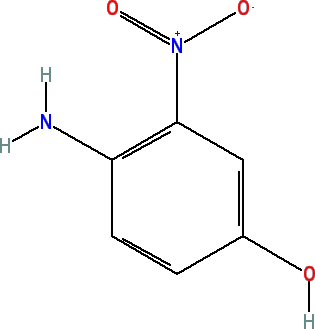4-Amino-3-Nitrophenol
Safety Information
Expert Panel for Cosmetic Ingredient Safety:
The safety of 2-amino-3-nitrophenol, 2-amino-4-nitrophenol, 2-amino-5-nitrophenol, 4-amino-2-nitrophenol, 4-amino-3-nitrophenol, 2-amino-4-nitrophenol sulfate, 3-nitro-p-hydroxyethylaminophenol, and 4-hydroxyethylaminophenol has been assessed by the Expert Panel for Cosmetic Ingredient Safety. The Expert Panel evaluated the scientific data and concluded that 2-amino-3-nitrophenol, 2-amino-4-nitrophenol, 2-amino-5-nitrophenol, 4-amino-3-nitrophenol, 2-amino-4-nitrophenol sulfate, 3-nitro-p-hydroxyethylaminophenol, and 4-hydroxyethylaminophenol were safe as hair dye ingredients in the current practices of use and concentration, but the data were insufficient to make a determination for 4-amino-2-nitrophenol.
2-Amino-3-nitrophenol and the other amino nitrophenol dyes penetrated human skin but were not retained in the body. Laboratory studies of acute, short-term and sub chronic tests reported little evidence of toxicity. These amino nitrophenol dyes were not dermal or ocular irritants. Some amino nitrophenol dyes have skin contact sensitization potential. The Expert Panel concluded that 2-amino-3-nitrophenol, 2-amino-4-nitrophenol, 2-amino-4-nitrophenol sulfate, 2-amino-5-nitrophenol, 4-amino-3-nitrophenol, 3-nitro-p-hydroxyethylaminopheno and 4-hydroxypropylamino-3-nitrophenol were safe as hair dye ingredients. The data were insufficient to reach a conclusion for 4-amino-2-nitrophenol. The additional data needed for 4-amino-2-nitrophenol included dermal penetration, if absorbed, dermal reproductive and developmental toxicity data may be needed.
More information about hair dyes.
4-Amino-3-nitrophenol, 4-hydroxypropylamino-3-nitrophenol and 3-nitro-p-hydroxyethylaminophenol may be used hair dyes marketed in the Europe. After dilution with hydrogen peroxide, these ingredients are permitted at maximum concentration of 1.5%, 2.6% and 3% for 4-amino-3-nitrophenol, 4-hydroxypropylamino-3-nitrophenol and 3-nitro-p-hydroxyethylaminophenol, respectively (see Annex III part 1 and part 2). 2-Amino-3-nitrophenol, 2-amino-4-nitrophenol, 2-amino-5-nitrophenol, 4-amino-2-nitrophenol and 2-amino-4-nitrophenol sulfate are not permitted for use in hair dyes in Europe (see Annex II).
